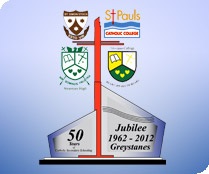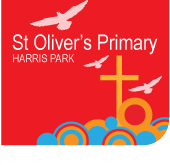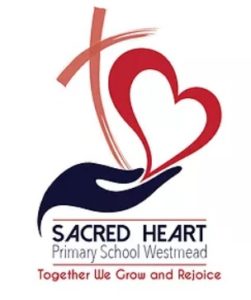Saint Anthony’s Girraween – Toongabbie
Saint Patrick’s Parramatta
Saint Anthony’s Girraween – Toongabbie
The first Catholic school in Toongabbie, known as St Enda’s, was opened in January 1950 by the Sisters of Mercy.
Many students were from the predominantly Maltese farming community. Children from Kindergarten to Year 4 were taught in the present parish hall at Toongabbie, which served as both church and school. The initial enrolment was 179 students.
In 1956, a new school was built on the present site in Targo Road, Girraween, and classes extended to Year 6 for girls. Boys would leave after Year 3, (up to 1966) and Year 4 after 1966, and go to Parramatta Marist, Simon Stock or Patrician Brothers Blacktown.
The school was renamed St Anthony’s after St Anthony of Padua, patron of the parish of Toongabbie. Additional buildings were opened in 1968, 1975, 1979 and 1998. A new resource centre, and classroom extensions and refurbishments were completed in 2010.
In 1982, the first lay Principal was appointed. Through co-operation and commitment, staff and community met the challenge of maintaining the identity of the school and continued to cater for the different needs of the community. In 1984, a decision was made to cater for boys all the way through to the end of Year 6.
St Anthony’s Primary continues the tradition of the Mercy Sisters by focusing on the education of the whole child. The achievements and values of the past are recognised and appreciated as being important and relevant.
Celebrations are part of our tradition and continue to be a vital part of St Anthony’s. Close working relationships exist between the parish and the school with the pastor, parents, staff and students being valued.
St Simon Stock / Newman High / St Paul’s College Greystanes
Newman high at Greystanes, was run by the brothers of st Gerard. Brother Anthony and brother Joseph sent many of us boys to Marist in years 11 and 12. I know we were over represented in the cadets with many of us continuing our military careers into the regular defence forces.
Dean Cox
See their Alumni Pages at www.stpaulsgreystanes.catholic.edu.au/en/Community/Alumni-Main-Page
St Simon Stock
He was born in a humble stable, and our beginnings were likewise very humble, in makeshift accommodation. In fact this College was founded back in 1958 as the new Catholic school in the district of Pendle Hill. It was originally called St Simon Stock School and the written history of the College records: “The beginnings bore all the hallmarks of the pioneering days. Classes were conducted in the open air and in a garage for the first week, after which a small room was made available in the new building. St Simon Stock College for Boys took as its motto “Esto Vir” which means “Be a man”.
Over the years, the school took on a new name and motto. The 19th-Century English convert and thinker John Henry Newman was the inspiration for the new name and the new motto was “Heart speaks to Heart”.
Finally, the school was renamed again to St Paul’s. The new motto for St Paul’s is “Many Gifts – One Community”
St Patrick’s Guildford
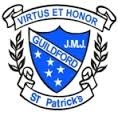
“I attended St Patrick’s Guildford 1953-’56 and transferred to MBP in”57 with Alan Cornell. St Pats was closest catholic school to Villawood Migrant Centre and busloads of refugees were transported daily to St Pats. Most spoke no English. Crowded classes of boys and girls was the norm. St Joseph sisters always left the girls in charge if they left the room and the spiteful girls would always insure some males were punished when sister returned. The boys rang the Angelus each day and worked in the nuns garden. We emptied the the school rubbish bins and ingenerated all rubbish. The reward was in sifting the ash for money left in lunch bags. Most of the migrants brought the supplied lunch of a half loaf of bread and cheese or sausage which we some times swapped with for a vegemite sandwich. The nuns were hard on the boys. I think Ivan Milat was in my class for a while, but the whole family were weird and didn’t pay any school money and were moved on to the adjoining public school. I used to go early and meet the baker who gave crusts to eat. Dennis Hodgson lived across the road from the school and later moved to MBP.” Anthony Cranney
The story of St Patrick’s Guildford
St Patrick’s Guildford has a rich history behind its faith and learning, first opened in 1910 with 50 pupils, originally sharing a church building with the local community.
In the early 1900s it became apparent that the people of Guildford needed a Catholic parish to accommodate the growth of the area, and so, on 2 April 1910, the community celebrated the opening of a new church building. In October of that year, the building began to serve a dual purpose when the Sisters of St Joseph started to use it as a school room. The Sisters of St Joseph rented a cottage in Guildford Road to be closer to the church/school building. Every Friday afternoon, the school room would be transformed back into a church and back again ready for the students on Monday mornings.
In 1935 the old church was moved to accommodate a new one, and a convent was built for the Sisters of St Joseph. The school continued to grow and over time many more buildings and facilities were added to both the school and the church.
Now well into its second century, St Patrick’s Primary delivers a relevant, 21st century education with well-appointed modern buildings and teaching facilities, thanks to the extensive building program of recent years. Our school is proud to continue serving its diverse community and delivering high quality, Catholic education.
Source: www.stpatsguildford.catholic.edu.au/en/About-Us/Our-Story
The history of St Patrick’s Guildford in pictures:
https://www.stpatsguildford.catholic.edu.au/Our-Community/Gallery/2014-Our-History
Saint Monica’s North Parramatta

St Monica’s has a rich history behind its community stemming from the opening in 1892.
In the Beginning
St Monica’s Primary School was established in 1892 by the Sisters of Mercy. It consisted of a small lean-to at the back of the Sacristy. The first Pastor was Fr James Joseph Mahoney who supported the sisters in their work and guided the Parish through its first year.
In 1918 the first of the school buildings was erected, and in 1955 extra buildings were added.
By 1971, the school’s enrolment had increased to 475 and another building was erected to form the school site.
In 2010 a new building project has been completed and now St Monica’s has a new state of the art Learning Centre, complete with electronic whiteboards, open learning areas, and new facilities.
Hi I run the St Monica’s Past Pupils Association!.
We have a Facebook group: St Monica’s Primary North Parramatta Past Pupils Association www.facebook.com/groups/stmonicasnorthparra I have included all our 1950’s, 1960’s, 1970’s and 1980’s class photos – check out the photos tab. Cheers
Janet Joseph
St Monica’s North Parramatta in the 1950’s
St Monica’s was situated on the corner of Church Street and North Rocks Road, and in the 1950’s it was just opposite the Sydney Woollen Mills and the local dairy. My earliest memories of St Monica’s are from the early 1950’s when the complex consisted of a small stone church and a two roomed school building (built around 1918) with an open fronted verandah which had two tiny storage rooms, one at each end. The facilities were very primitive and I don’t know how they fitted all the classes into those rooms – I know I spent a lot of time in a class on the verandah. Behind the rear fence were paddocks populated by cows. The school was run by the Sisters of Mercy assisted later by a few non-religious teachers. All facilities (and particularly the toilets) were amazingly primitive. I think the only activity (for the boys anyhow) was climbing the trees in the front yard. Since cars were only for the wealthy, most children walked to school.
The two rooms were almost bare. Blackboards were on easels and our desks were the usual type, each sitting two children and equipped with ink wells. Discipline was tough but I remember enjoying the experience.
Two rooms were inadequate for the fast-growing population – the Northmead area was well served by small market gardens, often established by Italian immigrants after the war – and consequently a large timber parish hall was constructed using mainly voluntary labour (I know my father was involved) and some classes were then established in this hall. There were no dividing partitions or walls and the classes could see each other, particularly the class on the stage.
The parish church was filled to overflowing on a Sunday and Fr John Ferrari would rule with a strident voice, not tolerating any mischief.
Around 1955, just when I was leaving, a new school was constructed (in the paddocks where the cows used to be) and students were provided with individual classrooms for the first time.
Travelling from that area to Marist Brothers from 1955 was on buses which were old even then, and space was so limited that, very often, the last on (at my stop) would have to hang out the door, clutching a bag in one hand and the bus with the other.
Sadly, I have not kept in touch with my friends from that time, boys such as Michael Baradinsky, Dominic Rahmate and Bernie Koen. Timothy Irwin
Tim, I remember you and your brother Ed well. (Charlie too) The ‘new’ St Monica’s school has in turn been demolished and a new building is in its place. The 3 mentioned are all still around and in the white pages listings on line. Mike Baradinsky is now known as Mike Barry. Cheers, David McFadden 1957 – 1964
Saint Oliver’s Harris Park
In 1927 a parcel of land was purchased in Harris Park. The Blessed Oliver Plunkett Church was built and on Christmas Day in 1929, the first Mass was celebrated.
In 1930 the Church School of Blessed Oliver Plunkett opened under the auspices of the Sisters of Mercy. Australia was in the grips of the Great Depression and times were hard. The Church School shared the one space. From Monday to Friday the Church was used as a school. The space was divided in two, separated by a blackboard. Each Friday afternoon the students and Sisters would clean and prepare the Church for Sunday Mass.
As the school grew, some classes were held outdoors in the warmer months under the shade of the camphor laurel tree behind the Church. This area was fondly known as “The Roxy”, named after a popular picture house of the day.
In the 1930’s a second storey of classrooms was added above the Church. The school continued to grow and by the 1940’s, some classes were held in the Convent next door to the Church.
In the 1950’s and 1960’s, extra land was purchased next to the Convent. John Brown Cottage was also purchased to accommodate extra classes. Around this time music classes were also enjoyed in the Convent.
In the 1970’s a new two-storey wing was added to the back of the Church. The Sisters of Mercy, with their charism of mercy, compassion and justice, ended their relationship with the school in 1975 and the school continued their legacy under the guidance of lay principals.
Oliver Plunkett was canonised in 1975. From 1976 onwards, the school was known as St Oliver’s Primary School.
In 2000 the school was upgraded and extended. The Library was moved from the top floor to the middle floor.
Today the former Convent, historic Kenilworth House, has been restored to become the Holy Spirit Seminary.
Source: www.stoliversharrispark.catholic.edu.au/en/About/Our-Story
“I left Blessed Oliver Plunkett Primary (Now St. Oliver’s) in Harris Park in 55 to attend MBP. I recall one of our teachers, Miss Gledhill whose son Vance (I think) was a few classes above us. I still have bad dreams about Snakey/ BR. Laetus/ Cpt. Meany, who I’m sure was a good man but I was a wicked boy 🙂 Young Brother Patricius was the most adept cane painer, Brother Benildus used to hoist a few at the Woolpack and Brother Cornelius was obsessed with our ‘Impure Thoughts’
I recall John Devitt coming to the school one day, standing on the steps with Brother Claudius addressing us all. I also recall Maurie Curach (an erstwhile Fonzie) singing ‘Everybody loves Saturday Night’ in French….. “Tout Le monde, tout Le monde, tout Le monde, tout Le monde, tout Le monde aime samedi soir” Indelible memories. Maurie passed away a few years ago I heard. RIP mate.” Ron McLaren
Saint Mary’s Rydalmere
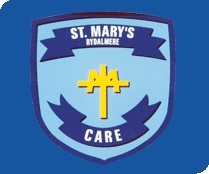
St Mary’s Primary School opened in 1889.
1893 saw the arrival of the Sisters of Mercy in Rydalmere. The sisters worked tirelessly for the Rydalmere community over the following eighty years eventually withdrawing in 1976 handing over to a lay principal, Mr Jack Wilkinson.
When Mr Wilkinson retired in 1981 the Marist Brothers took over and Br William Tarrant became principal. The Marist Brothers ran St Mary’s for ten years leaving behind a strong Marian culture which is still very evident today.
St Mary’s became a co-ed, two stream school in 1987 when it retained the boys up to Year 6. Formerly, boys in Years 5 and 6 left St Mary’s to attend St Patrick’s, Dundas but in 1987 St Patrick’s ceased to take primary enrolments.
In 1991 St Mary’s once again became a school under the lay leadership of Mrs Carmel Agius.
In 1998 an extensive refurbishment project was commenced which enabled St Mary’s to more effectively meet the needs of individual students in a contemporary learning environment.
Source: www.stmarysrydalmere.catholic.edu.au/en/About-Us/Our-Story
There was a number of us who attended St Mary’s Rydalmere up to third class and then had the choice of Marist Brothers Parramatta or Eastwood. Dundas, Rydalmere, Ermington and other neighbouring suburbs were expanding rapidly and I can remember our first day in third class was shared with 90 students. I kid you not! To make room, five of us were “promoted” to the all girl fourth class.
Dennis Bishop
Saint Nicholas of Myra Penrith
The Parish of St Nicholas of Myra is one of the oldest in the Sydney area. The school and parish are situated in the heart of the business centre of Penrith. Established in 1852, St Nicholas is the oldest of three primary schools in the area. In 1879 Saint Mary MacKillop founded her first convent in NSW in Penrith and in 1880, the Sisters of St Joseph were given leadership of the school community. In 1906, 1953, 1969 and 2002 new buildings were erected to serve the changing needs of the school population. The school has 207 children enrolled and a teaching staff of thirteen.
In January 2009, the southern side of Higgins Street became a construction site for a fresh new learning space. This space is a flexible learning environment that provides spatial variety and enables small group, class and large group interaction. A new school hall was completed in May 2010.
Source: www.stnicholaspenrith.catholic.edu.au/en/About-Us/Our-Story
“Another important feeder school was St. Nicolas of Myra Penrith. St Dominic’s College was founded in 1959. It was conducted by the Christian Brothers. I left St Nicholas in 1963 only to return to St Dominic’s in 1968. In the meantime i attended St Vincent’s Boys Home until 1966 – then to the Parramatta site for 6th class and 1st form.
Here is a little about St Nicolas of Myra:
The Parish of St Nicholas of Myra is one of the oldest in the Sydney area. The school and parish are situated in the heart of the business centre of Penrith. Established in 1852 St Nicholas is the oldest of three primary schools in the area. In 1879 Blessed Mary MacKillop founded her first convent in NSW in Penrith and in 1880 the Sisters of St Joseph were given leadership of the school community. In 1906, 1953, 1969 and 2002 new buildings were erected to serve the changing needs of the school population. The school has 184 children enrolled and a teaching staff of 12.” Michael Clarke
Sacred Heart Westmead
Sacred Heart Primary was established in 1956 by the Sisters of Mercy. The Mercy tradition continued until 1993, when Mrs Sattler was appointed the first lay Principal of the school. Lay teachers now hold the executive positions as well as being class teachers.
For a few years the school only took boys to Year Three, after which they were moved to Parramatta Marist Junior School. It was not until 1991 that Sacred Heart educated boys to the completion of year six. In 1999, Sacred Heart was extended and improved by the Catholic Education Office, increasing the enrolment of the school to over 200 students.
A close relationship exists between the School and the Parish and we are very fortunate to have a church on site. In December 2002– early 2015 the care of both the parish and school was transferred to the Camillians (Ministers of the Infirm).
In January 2015, the Camillians, after dialogue and consideration with the Provincial and Diocese of Parramatta, handed back the administration of Sacred Heart Parish Westmead to the Diocese. After a short period under the care of a Parish Administrator a new Parish Priest, Fr Walter Fogarty a member of the Diocese, was appointed in April 2015.
Saint Patrick’s Parramatta
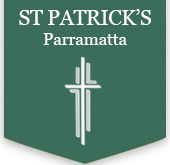
St Patrick’s Catholic Primary Parramatta is the oldest parish school in Australia. [Sharing a common heritage with Parramatta Marist]
The parish school was established by Fr Therry in Hunter Street in 1820. In 1837 the school was relocated next to St Patrick’s Church. In 1874 the girls and smaller boys were separated and taught in a school opposite the church.
From 1874-1888 the Sisters of Mercy, Head House Monte Saint Angelo, North Sydney, were teaching at St Patrick’s School Parramatta, in a building which was standing in front of the present OLMC in Victoria Road, then known as Pennant Street.
From 1874-1888 the Sisters of Mercy, Head House Monte Saint Angelo, North Sydney, were teaching at St Patrick’s School Parramatta, in a building which was standing in front of the present OLMC in Victoria Road, then known as Pennant Street.
The Sisters of Mercy from Callan, Ireland, then took up residence in Parramatta on 8th December 1888 at the invitation of Cardinal Moran. They re-opened the school on Monday 10th December, just two days later with an enrolment of 55 pupils.
In 1926 that building was demolished and a new building was erected at the corner of Villiers Street and Ross Street, the current site.
The senior girls moved to Westmead in 1966 to form Catherine McAuley High School. The primary school remains to this present day.
The Sisters of Mercy handed the responsibility for the School to the first lay Principal Ms Joan Coyle in 1985.
Source: www.stpatsparra.catholic.edu.au/en/About-Us/Our-Story


